|
Report
sightings |
|
Report
sightings |
|
2012 was another good birding year on the Warren with the site list reaching 196 species with two new species for the recording area; however the year ended on a relatively quiet note with no new birds through December. Other highlights included Surf Scoter, American Wigeon, Bonaparte's Gull, Mandarin, Tawny Pipit and Waxwing. There was a new breeding species with Herring Gull also nesting successfully for the first time but Ringed Plover and Coot continued to be absent.
Other low points include the continuing decline in wintering grebes, sea duck, wildfowl and waders, with many migrants such as Cuckoo, Whinchat, Garden Warbler, Whitethroat and Lesser Whitethroat also scarce with no Turtle Dove at all. Other absentees included Kentish Plover, Leach’s Petrel and Yellowhammer.
Ringing returns included a Pale-bellied Brent Goose from Ireland; three Bar-tailed Godwit from Holland; a couple of Sanderling from Ghana including one tracked through Namibia, France and Scotland; Great Black-backed Gull from Norway, France, Guernsey and Portland; Lesser Black-backed Gull from Guernsey and Spain; and Sandwich Tern from Aberdeen.
Review
The overwintering drake American Wigeon and female Surf Scoter started the year off well, with single Velvet Scoter, Black Redstart and Dartford Warbler also remaining from 2011. Other January highlights included the recording area’s first ever wintering Brambling, a Balearic Shearwater, Long-tailed Duck, Black-necked Grebe, Water Pipit and Iceland Gull.
A cold snap at the start of February produced the Warren’s first Glossy Ibis which flew over, presumably having been frozen out if its favoured sites at the top end of the estuary. The same conditions produced a couple of Woodcock and three Black-necked Grebe. March saw a rare five Grebe day onsite, a second Iceland Gull but spring was late arriving with the first Wheatear not making landfall until the 17th and Sandwich Tern numbers failing to build.
April’s highlight was confirmation of the first breeding record of Great-spotted Woodpecker on site, they eventually fledged three young. There was strong spring passage of Whimbrel, Pale-bellied Brent Geese and Pomarine Skua, but very low numbers of Whitethroat, the first Marsh Harrier since 2009, the third Iceland Gull of the year and single Little Ringed Plover, Red Kite and Black-throated Diver.
A strong candidate for a wild Barnacle Goose arrived on May Day with a mixed flock of Brent Geese that had earlier flown west past Portland. This was closely followed by the third site record of Red-rumped Swallow along the Dune Ridge and then next day, the first Golden Oriole for the recording area, a brief singing male. Then later in the month two second records for site arrived on the same day; another flyover Glossy Ibis and also overhead three White Stork. Other sightings included record counts of 14 Pomarine Skua and six Red Kite, the 14th Warren Nightjar and five more Red Kite.
An unexpected start to June was the first spring Pectoral Sandpiper for the Warren and also from Exminster, the Glossy Ibis which flew over the spit for the third time. A count of 200+ Storm Petrel continued this recent midsummer feature, as was an early build-up of failed breeders especially Curlew. Two birds that perhaps got away in the month were a mystery Dunlin and grey-toned Yellow Wagtail…The biggest news however was of a first for Britain in Greenland Lake.
The Slavonian Grebe completed its fifth summer on the Exe in July, but the autumn started quietly with half a dozen Roseate Tern, three Curlew Sandpiper and a couple of Little Ringed Plover. The first ever August record of Short-eared Owl characterised what was an early passage for many species with Pale-bellied Brent Geese also setting a new arrivals record. At the end of the month seawatching saw a record five Long-tailed Skua head south.
September saw good numbers of the endangered Balearic Shearwater, the site’s third record of Tawny Pipit flew along the Dune Ridge, the only autumn Little Stint remained for just one tide and Curlew Sandpiper were also scarce. The years second Nightjar was a surprise roosting on the feeders, but like the first it was flushed by a photographer.
The site’s fifth record of Bonaparte’s Gull arrived for an extended stay at the end of October, but may be a returning bird, a male Bearded Tit, the first since 2009, also took up temporary residence. Other highlights included the 5th site record of Mandarin, the 10th record of Long-eared Owl and record counts of Robin and Wren. Overhead during vis mig watches single Hawfinch, Spoonbill, Snow Bunting and Woodlark were picked up whilst counting many thousands of Wood Pigeon and hundreds of Jackdaw.
The second record of Waxwing, and the first to land on site, were the late year highlight, five graced the Back Path for two days with a couple of flocks also flying over as the Warren benefited from the national influx. Two Water Pipit continued a good recent run for this species but the female Surf Scoter failed to return for its sixth winter. A Swallow lingered into December, but the biggest surprise through was the occurrence of Black-necked Grebe on the Main Pond which hopefully remains into 2013. |
Monday 31st:
Seawatching before the rain started around 10am produced a Great Skua south along with 316 Kittiwake, 120+ Guillemot, 60+ Gannet, 24 Fulmar, five Razorbill and two Red-throated Diver.
Sunday 30th:
No news was received.
Saturday 29th:
Seawatching during the morning produced three Great Skua south in three hours along with 771 Kittiwake, 386 Gannet, 270+ auk sp, mostly Guillemot, 15 Fulmar, eight Great Northern and five Red-throated Diver. Elsewhere two Avocet, two Mediterranean Gull (fw & sw) and the Slavonian Grebe were in the estuary.
Friday 28th:
No news was received.
Thursday 27th:
An Avocet was in Shutterton Creek with 52+ Snipe and 13 Lapwing also in the estuary. Elsewhere the Black-necked Grebe remains on the Main Pond.
Tuesday 25th - Wednesday 26th:
No news was received.
Monday 24th:
Offshore it remains quiet with just seven Red-throated Diver heading south. Counts from the estuary included 540+ Wigeon, 170+ Grey Plover, 97 Great Black-backed Gull, 66 Shelduck, c30 Knot, 22 Sanderling, 21 Snipe, just nine Teal and three Lapwing. Elsewhere the Black-necked Grebe was on the Main Pond.
Saturday 22nd - Sunday 23rd:
No news was received.
Friday 21st:
Offshore there were three Red-throated Diver on the sea, with three more heading south, 22 Great-crested and a Black-necked Grebe. A second Black-necked Grebe still on the Main Pond with four Little Grebe.
Monday 17th - Thursday 20th:
No news has been received, perhaps not surprising given the weather.
Sunday 16th:
Offshore there were 15 Great-crested Grebe and 11 Red-throated Diver, only four of which were on the sea. Counts from the estuary included 480+ Wigeon, 188 Grey Plover, 65 Shelduck, 30+ Turnstone, just 12 Sanderling and four Ringed Plover, two Goldeneye and the Slavonian Grebe. Elsewhere the Black-necked Grebe remains on the Main Pond.
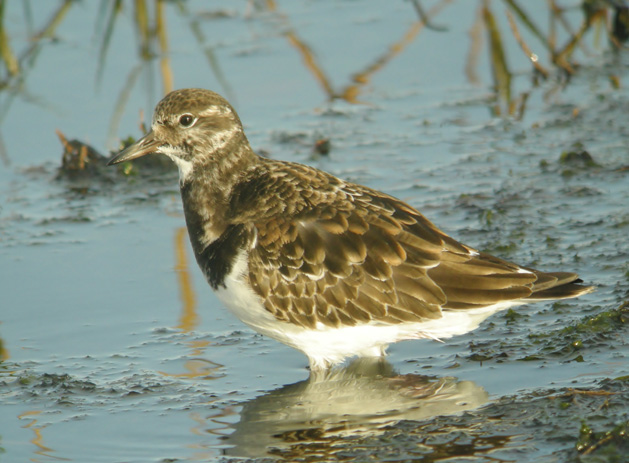
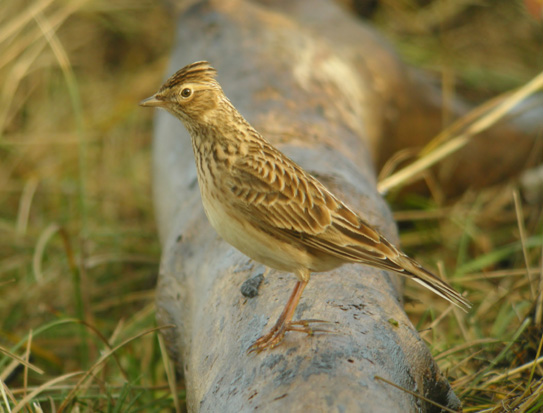
Turnstone 16/12/12 © Lee Collins Skylark 15/12/12 © Lee Collins
Saturday 15th:
Offshore there were nine Red-throated and three Great Northern Diver, with the Bonaparte's Gull again reported. Elsewhere the Black-necked Grebe was on the Main Pond, a Brambling was in the Entrance Bushes and the Slavonian Grebe, 12 Sanderling and a Goldeneye were in the estuary.
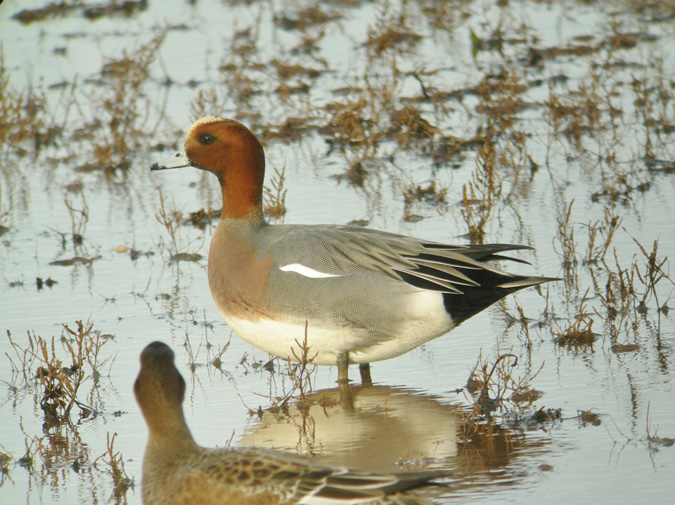
Wigeon 15/12/12 © Lee Collins
Friday 14th:
The Black-necked Grebe remains on the Main Pond, but no other news was received.
Thursday 13th:
The Black-necked Grebe was on the Main Pond, a Greenshank was in the estuary and two Lesser Redpoll and a Chiffchaff were in the Entrance Bushes.
Wednesday 12th:
No news was received.
Tuesday 11th:
The Black-necked Grebe remains on the Main Pond, but no other news was received. Outside the recording area, a Waxwing was briefly in Oakcliff Caravan Park.
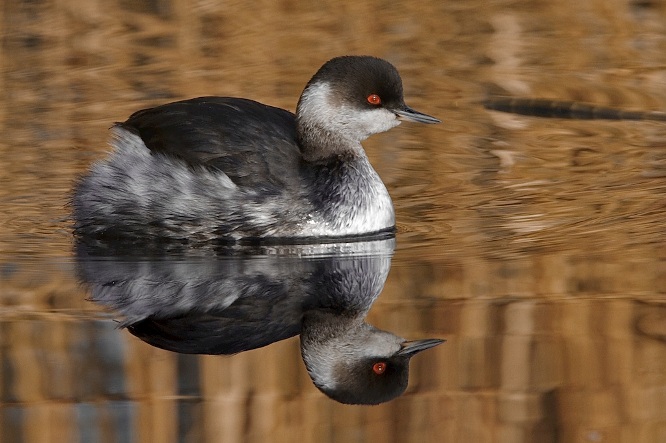
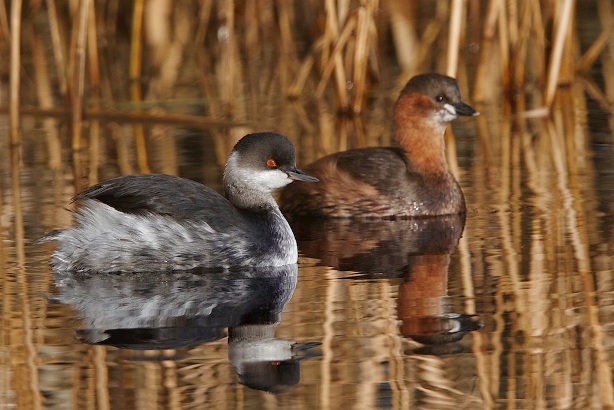
Black-necked Grebe 11/12/12 © Colin Scott Black-necked and Little Grebe 11/12/12 © Colin Scott
Monday 10th:
The Black-necked Grebe, Bearded Tit and pair of Gadwall remain on the Main Pond, although the latter two can elusive. Elsewhere 21 Great-crested Grebe, 11 Red-throated Diver and a Shoveler were offshore and a Tawny Owl and a Brambling were in the Entrance Bushes. The Bonaparte's Gull was reported again late morning but was also off Teignmouth mid afternoon.
Sunday 9th:
The Black-necked Grebe remains on the Main Pond with four Water Rail. WeBS counts taken on a rising tide included 1284 Oystercatcher, 102 Dunlin, 89 Brent Geese, 28 Turnstone, 20 Grey Plover and six Sanderling. Elsewhere 15 Great-crested Grebe and nine Red-throated Diver were offshore, 19 Skylark were on Warren Point, with six Stonechat, five Bullfinch and a Redwing also on site. Off site the Firecrest remains in the Outer car park
Saturday 8th:
The Black-necked Grebe and male Bearded Tit are still on the Main Pond with a second Black-necked Grebe, four Red-throated and a Great Northern Diver offshore. Elsewhere a Short-eared Owl was on Warren Point, a Chiffchaff was on site and 18 Turnstone were at Langstone Rock. Off site a Firecrest was in the Outer car park and of interest the Bonaparte's Gull was refound off Teignmouth.
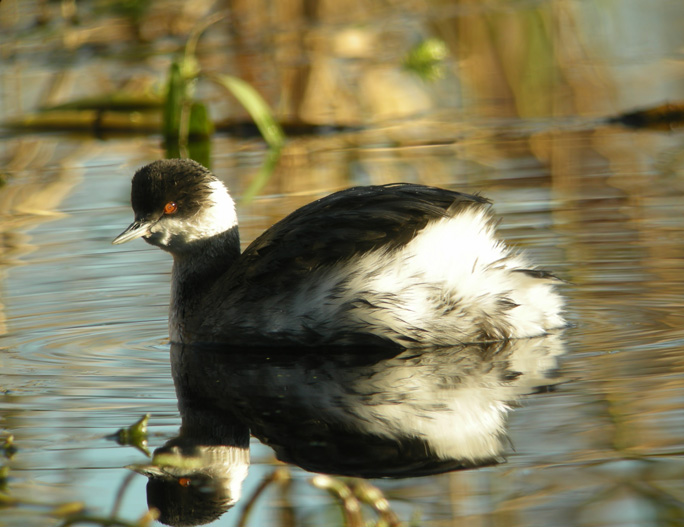
Black-necked Grebe 08/12/12 © Lee Collins
Friday 7th:
The Black-necked Grebe, four Gadwall and a roost of 3,000 Starling were at the Main Pond. Elsewhere a Black-throated Diver was reported offshore.
Thursday 6th:
Nine Lapwing in the estuary was the only news received.
Wednesday 5th:
The Black-necked Grebe and male Bearded Tit are still on the Main Pond with a pair of Gadwall. Elsewhere the Slavonian Grebe, four Goldeneye, a Greenshank and a Pale-belied Brent Goose were in the estuary.
Tuesday 4th:
No news was received.
Monday 3rd:
The Swallow was still surviving around the entrance bushes with the Black-necked Grebe on the Main Pond. Elsewhere the Pale-bellied Brent Goose was in the estuary and offshore there was a heavy auk passage, mostly Razorbill, with 635+ south in half an hour also present two Red-throated Diver.
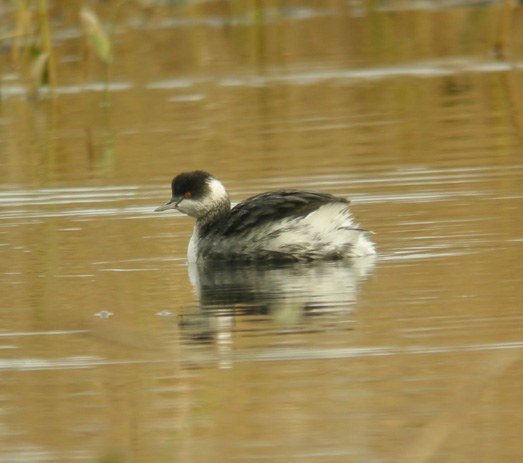
Black-necked Grebe 01/12/12 © Lee Collins
Sunday 2nd:
A Short-eared Owl was along the Back Path was a new arrival and a Waxwing was reported flying east. Also on site a Swallow was over the entrance bushes, the Black-necked Grebe and male Bearded Tit were on the Main Pond, where 500+ Starling came out of their roost early morning. Counts from the estuary included 120+ Grey Plover, 67 Bar-tailed Godwit, 20 Knot, four Shoveler, four Lapwing and a Pale-bellied Brent Goose. Elsewhere two Brambling, two Redpoll, two Blackcap and two Chiffchaff were on site and offshore there were 10 Great-crested Grebe, three Great Northern and a Red-throated Diver.
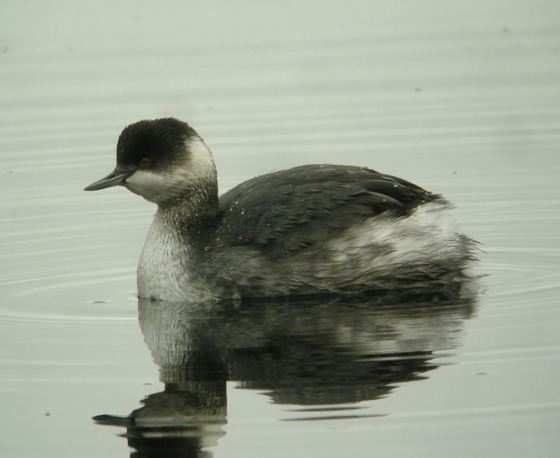
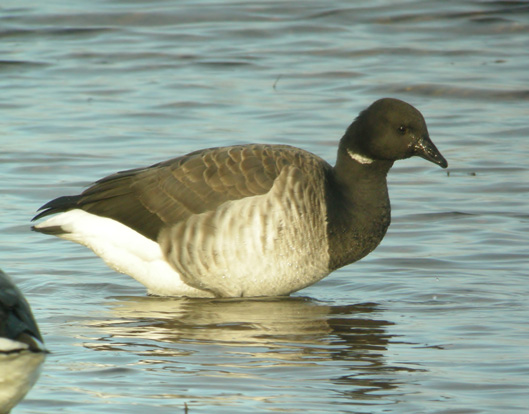
Black-necked Grebe 02/12/12 © Lee Collins
Pale-bellied Brent Goose 02/12/12 © Lee Collins
Saturday 1st:
There was no sign of the Waxwing today but the Black-necked Grebe and male Bearded Tit remained on the Main Pond. Elsewhere at least two male Brambling were at the feeders, a Slavonian Grebe was in the estuary, three Pintail, three Shoveler and two Gadwall were with the Wigeon, a Water Pipit was in Bight and two Swallow were reported.

Black-necked and Little Grebe 01/12/12 © Simon Thurgood
Back |
November 2012 |
Home